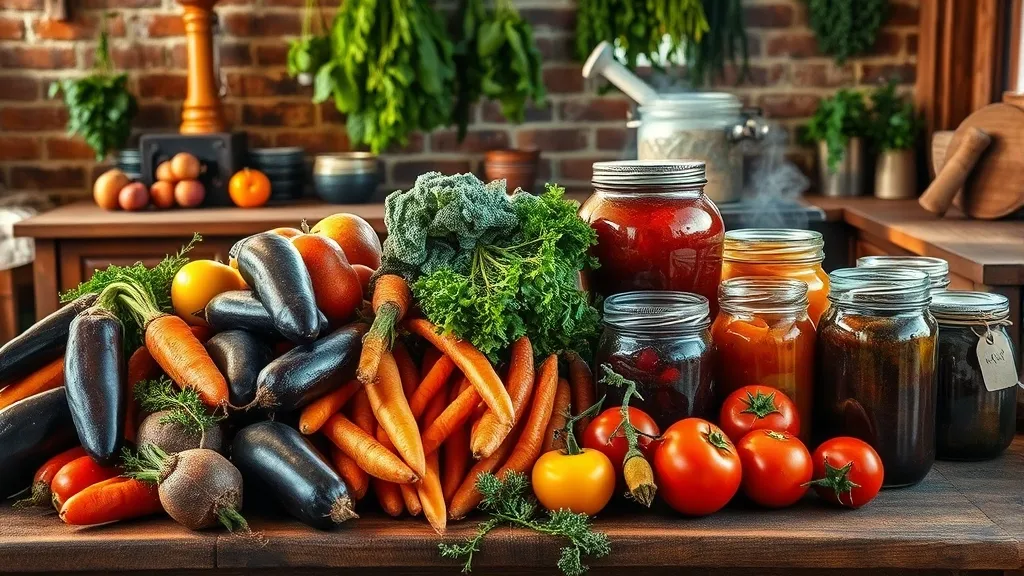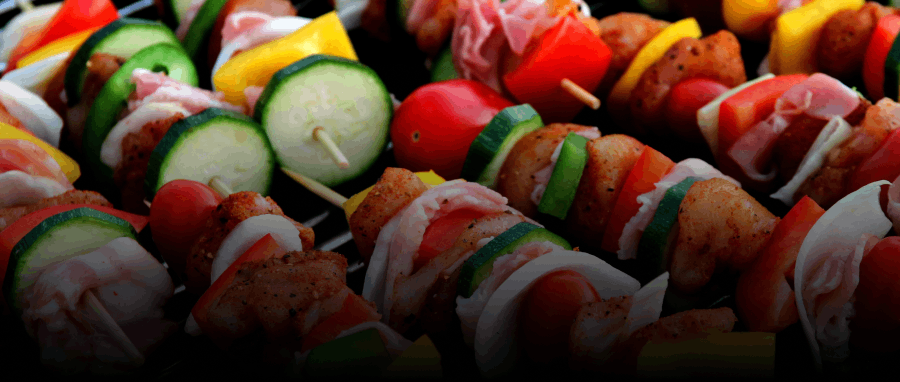The Salty Saga: How Brine Changed the Culinary Game
Alright, let’s talk about brining. I mean, who doesn’t love a good pickle, right? But brine isn’t just for cucumbers; it’s a game-changer in the kitchen, and it’s been around way longer than your favorite food blog. Seriously, ancient folks knew what they were doing when they dunked their meats and veggies in salty goodness.
Brining is essentially soaking food in a saltwater solution, and it does some pretty magical things. First off, it’s all about flavor. When you soak something in brine, the salt seeps into the food, enhancing its natural taste. It’s like giving your chicken a spa day—who wouldn’t want that? Plus, the salt helps retain moisture, which means you end up with juicy, tender meat instead of something that resembles shoe leather.
- Flavor Boost: Salt draws out the natural juices, creating a brine that flavors the food from the inside out.
- Moisture Retention: It helps the food hold onto moisture during cooking, so you don’t end up with a dry mess.
- Preservation: Salt inhibits the growth of bacteria, making it a natural preservative. Hello, shelf life!
Now, I know what you’re thinking: “Ugh, but salt is bad for me!” Look, everything in moderation, right? A little brine here and there isn’t gonna hurt. Plus, think about all those delicious pickles, olives, and cured meats that you just can’t resist. They all owe their existence to the magic of brine.
Historically, brining was a necessity. Before refrigeration, it was one of the best ways to ensure food didn’t spoil. Sailors used brined meats on long voyages, and it saved them from scurvy (and who wants to deal with that?). Fast forward to today, and brining’s still a thing, especially in the world of home cooking. You’ll see it in recipes all over the place—from Thanksgiving turkeys to grilled veggies.
So, the next time you’re prepping a meal, think about giving brining a shot. It’s super easy and can elevate your cooking game to a whole new level. Plus, it gives you an excuse to hoard all those fancy jars. And who can say no to that?
Smoke Signals: The Art of Preserving Flavor with Fire
Alright, let’s talk about smoke. Not the kind that makes your eyes water at a campfire, but the delicious, flavor-packed stuff that turns ordinary food into something extraordinary. Smoking is an ancient technique that’s been around forever, and honestly, it’s one of the coolest ways to preserve food while giving it that irresistible smoky flavor. Who doesn’t love a good smoked brisket or some tasty smoked salmon, right?
So, how does it work? Well, it’s pretty simple, actually. When you smoke food, you’re exposing it to smoke from burning or smoldering materials—usually wood. This process not only adds flavor but also helps to inhibit the growth of bacteria. I mean, it’s like a two-for-one deal: tasty and safe! You can use different types of wood to give your food unique flavors—hickory, applewood, mesquite—the list goes on. It’s like a flavor adventure every time you fire up the smoker!
- Hot Smoking: This is when you cook the food while it’s exposed to smoke. Perfect for meats and fish!
- Cold Smoking: This one’s for flavoring without cooking. Think of it like giving your food a smoky hug without the heat.
Now, I’ve tried both methods, and let me tell ya, each has its charm. Hot smoking is great for a hearty meal, while cold smoking is perfect for snacks or appetizers. Imagine serving up some cold-smoked cheese at your next gathering—instant party hit! Just make sure to have some crackers on hand because you know people will come back for more.
One thing to keep in mind is that smoking can take some time. Patience is key here, folks. It’s all about low and slow. But trust me, the end results are totally worth it. Plus, there’s something really satisfying about tending to a smoker and watching that beautiful smoke curl up into the sky. It’s like a mini meditation session with a side of deliciousness!
In conclusion, smoking is much more than just a preservation method; it’s an art form. It connects us to our ancestors who had to find clever ways to keep their food from going bad. So, fire up that smoker, experiment with different woods, and let your taste buds do the talking. You might just find your new favorite way to preserve and enjoy food!
Fermentation Nation: Transforming Food into Probiotic Powerhouses
Alright, let’s dive into the magical world of fermentation! Seriously, if you haven’t jumped on the fermentation bandwagon yet, you’re missing out on some serious culinary alchemy. I mean, who would’ve thought that leaving some cabbage out to chill could turn it into crunchy, tangy sauerkraut? It’s like the food version of a science experiment, and the results are delicious!
Fermentation isn’t just about making food taste funky (in a good way, of course). It’s all about those little microorganisms—bacteria, yeasts, and molds—that work their magic to transform food. They munch on sugars and produce acids and gases, giving us everything from yogurt to kimchi. Plus, those probiotics they create? They’re like tiny superheroes for your gut health. I read somewhere that a healthy gut can even be linked to better mood. So, eat your kimchi, and maybe you’ll be a little happier. Who knew gut health could be so uplifting?
- Yogurt: A classic example of dairy gone wild! Just a few cultures and some milk, and you’ve got a creamy snack that’s gut-friendly.
- Kimchi: This spicy Korean dish is basically fermented vegetables, and let me tell you, it packs a punch. Plus, you can find a million variations!
- Kefir: Think of it as yogurt’s bubbly cousin. It’s a drinkable yogurt that’s full of probiotics and can be used in smoothies or just enjoyed on its own.
- Pickles: Who doesn’t love a good pickle? Fermented cucumbers bring that tangy crunch to sandwiches and burgers!
So, how did our ancestors figure all this out? Well, they didn’t have fancy refrigerators or food preservatives, so they had to get creative. They discovered that fermentation not only preserved food but also made it taste better and easier to digest. It’s like they stumbled upon a happy accident, and I’m so glad they did! I mean, who doesn’t want to enjoy some tasty, tangy foods while reaping the health benefits? It’s a win-win!
Incorporating fermented foods into our diets today is easier than ever. You can find them at almost any grocery store, or if you’re feeling adventurous, you can start fermenting at home. Just remember, things might get a bit funky in the process—literally! But hey, that’s part of the fun, right? So, let’s raise a glass of kombucha to our fermentation ancestors and keep those probiotic powerhouses alive!
Cold Comfort: The Chilling Truth Behind Ice and Snow in Preservation
So, let’s talk about something that’s super cool—literally! Ice and snow have been used for ages to keep food fresh. I mean, who doesn’t love the idea of having a little frostiness in their fridge? But it’s not just for keeping your ice cream from turning into soup; there’s a whole history behind this cold comfort.
Before the invention of modern refrigeration, people got really creative with how they preserved food. Imagine this: it’s the 18th century, and you’re living in a place where winter means a ton of snow. What do you do? You scoop up that snow and pack it around your food! Yep, that’s right—our ancestors had the right idea. They’d stash their meats and veggies in snow caves or ice pits, keeping everything nice and chilly. It’s like the original version of a cooler, but way more rustic and probably a bit smellier.
Snow and ice work by slowing down the growth of bacteria, which is pretty much what we’re all aiming for when we throw stuff in the fridge, right? With lower temperatures, food can last longer, and those pesky microorganisms don’t party as hard. It’s kind of like a frozen timeout for your food!
Here’s where it gets interesting: ancient cultures, from the Chinese to the Romans, had their own spins on using ice for preservation. They’d harvest ice from lakes in winter and store it in underground pits, covered with straw or sawdust to keep it from melting. Talk about resourcefulness! If only we could all be so clever. Sometimes I wonder if my fridge is just a fancy ice pit that’s had a glow-up.
Fast forward to today, and while we’ve got fancy freezers and all, the principles remain the same. You can still use ice to preserve food if you’re feeling adventurous. Just think about it: making your own icebox with snow and ice? It’s like a DIY project that could impress your friends at a dinner party. “Oh, this steak? Just a little something I preserved with good ol’ winter magic!”
So next time you’re knee-deep in a snowstorm or just chilling at home, remember that ice and snow aren’t just for snowballs or winter sports. They’ve played a huge role in how we keep our food fresh, and who knows? Maybe there’s a bit of ancient wisdom in that frosty goodness.




